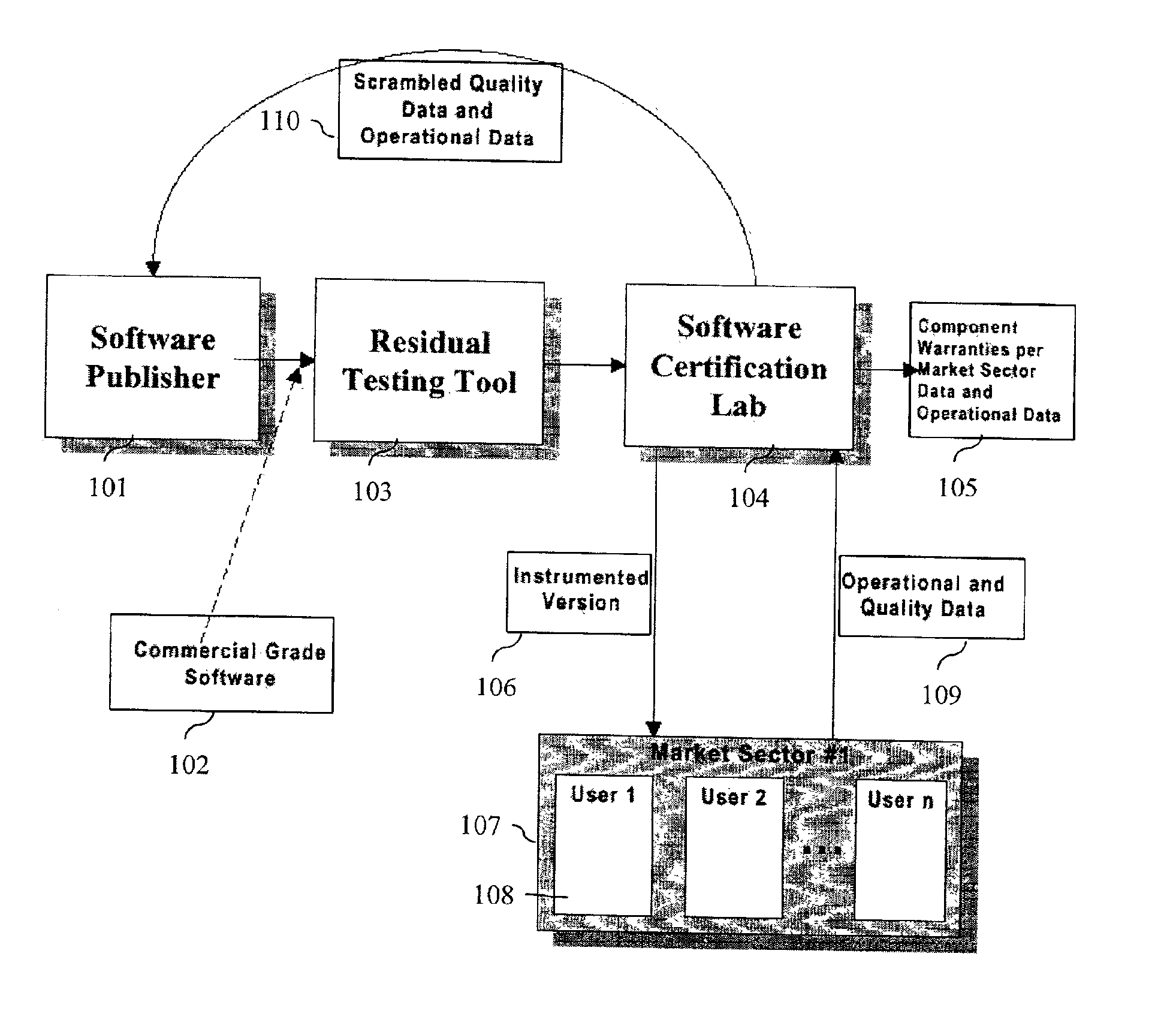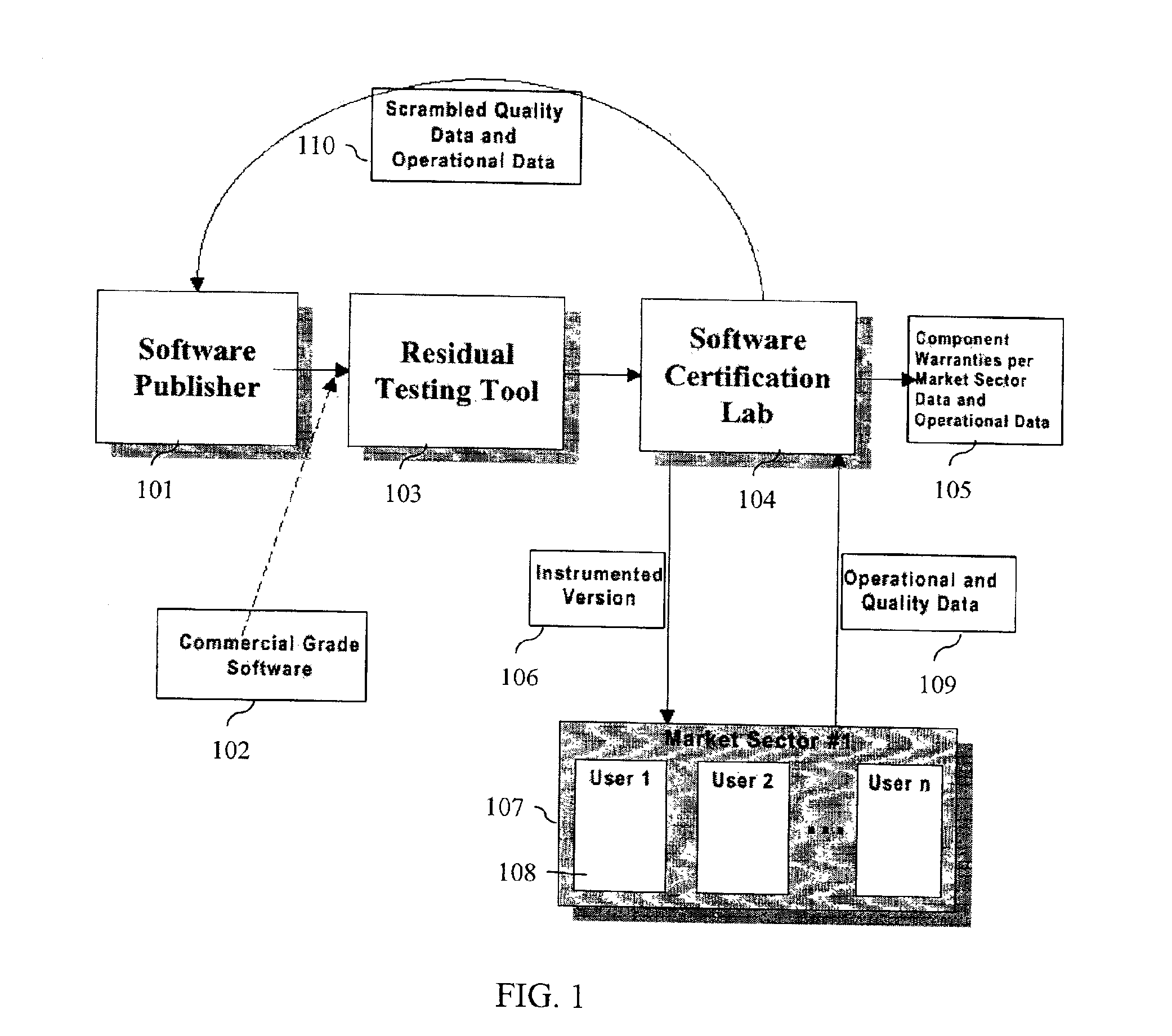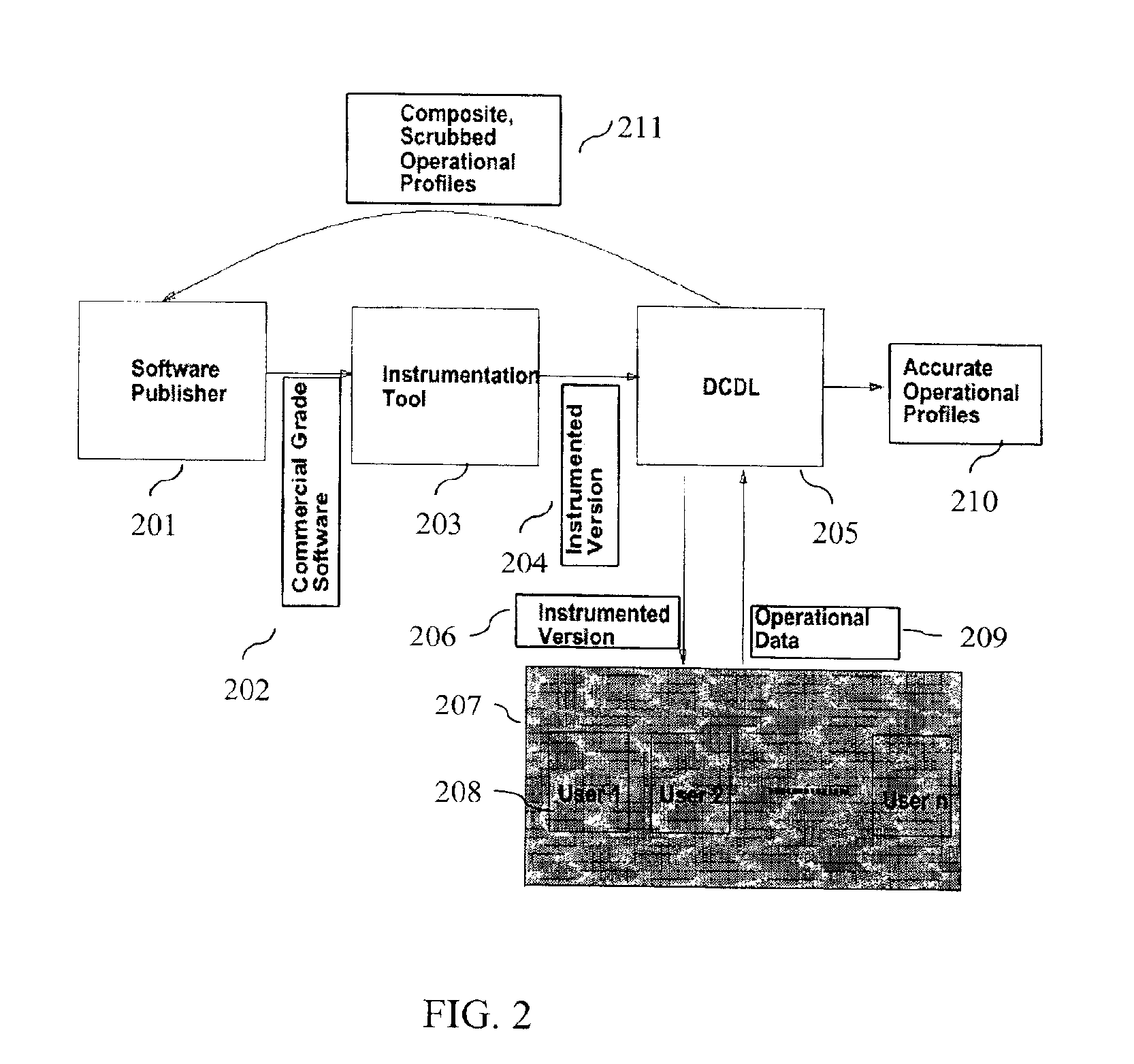System and method for software certification
a software certification and system technology, applied in the field of software certification systems and methods, can solve the problems of affecting the service life of millions of customers, affecting the reliability of products, and reducing so as to improve the reliability of software, improve the reliability of products, and reduce software bloat and costs
- Summary
- Abstract
- Description
- Claims
- Application Information
AI Technical Summary
Benefits of technology
Problems solved by technology
Method used
Image
Examples
first embodiment
of the Present Invention
As FIG. 1 illustrates, Software publisher 101 may submit a release candidate product, illustrated by Commercial Grade Software 102, to Residual Testing Tool 103. Residual Testing Tool 103 may add additional code to the core functionality available in an application, and create similarly instrumented copies of the software for testing purposes.
Instrumented copies may then be sent to Software Certification Lab 104, which may distribute the Instrumented Versions 106 to Market Sector 107, or to multiple market sectors. An appropriate market sector or group of market sectors in which software is to be tested may be chosen by a software publisher or by an SCL based on the anticipated use of a given piece of software, or to test an application in a new market.
Users may be chosen from within a particular market sector based on user profile information. User selection may be based on factors such as anticipated use levels and known hardware configurations to ensure a ...
second embodiment
of the Present Invention
A second embodiment of the present invention is illustrated in FIG. 2. Although similar to the process in FIG. 1, the process outlined in FIG. 2 is for versions which are intended for distribution to the general public. As illustrated by FIG. 2, Software Publisher 201 subjects finished, Commercial Grade Software 202 to Instrumentation Tool 203. Instrumentation Tool 203 creates Instrumented Version 204, which contains various tools, including those for software monitoring, encryption, and digital signatures.
Instrumented Version 204 may be supplied to Data Collection and Dissemination Lab (DCDL) 205. Instrumented Version 204 may collect feature usage and external environment data while in use. DCDL 205 may then supply an instrumented version to users willing to use such a version. Users may receive incentives to use Instrumented Version 204, such as free or reduced price software.
As users continue to use Instrumented Version 204, a DCDL may collect usage inform...
third embodiment
of the Present Invention
In another embodiment of the present invention, it may also be used by Application Service Providers (ASPs) as a means by which application usage is monitored, and by which application users are billed. Rather than a traditional ASP business model in which an entire generic application is licensed for a large number of users, users may license only those features in which they are interested.
Description of Components Used in Preferred Embodiments of the Present Invention
In preferred embodiments of the present invention, five general components can be beneficially combined: (1) an infrastructure and process for software certification, (2) a technology and process for collection of reliability and failure data from field users, (3) a system and method for creating software reliability certificates, (4) a system and method for analyzing failure data, and (5) a system and method for analyzing feature / function usage.
Infrastructure and Process for Software Certific...
PUM
 Login to View More
Login to View More Abstract
Description
Claims
Application Information
 Login to View More
Login to View More - R&D
- Intellectual Property
- Life Sciences
- Materials
- Tech Scout
- Unparalleled Data Quality
- Higher Quality Content
- 60% Fewer Hallucinations
Browse by: Latest US Patents, China's latest patents, Technical Efficacy Thesaurus, Application Domain, Technology Topic, Popular Technical Reports.
© 2025 PatSnap. All rights reserved.Legal|Privacy policy|Modern Slavery Act Transparency Statement|Sitemap|About US| Contact US: help@patsnap.com



